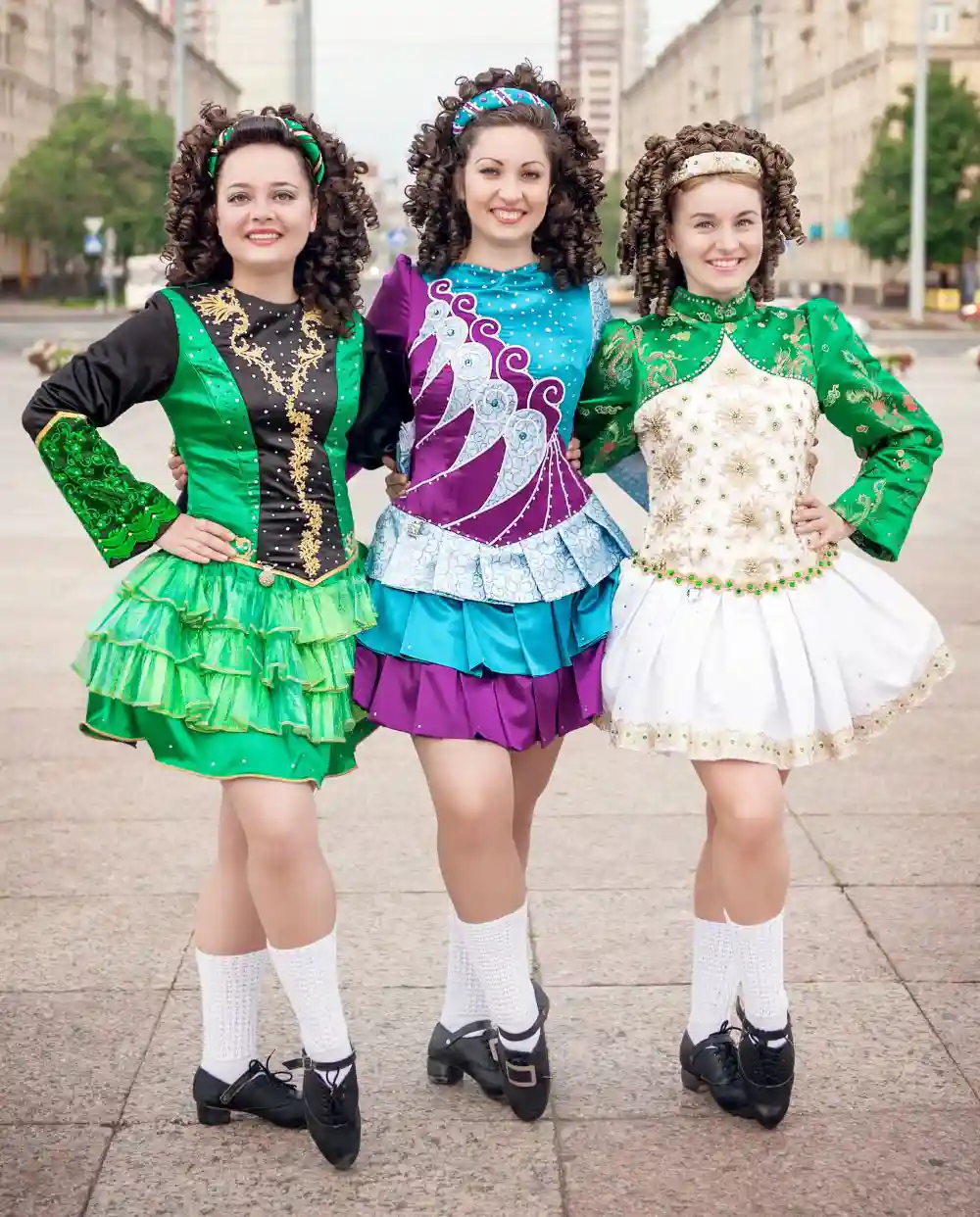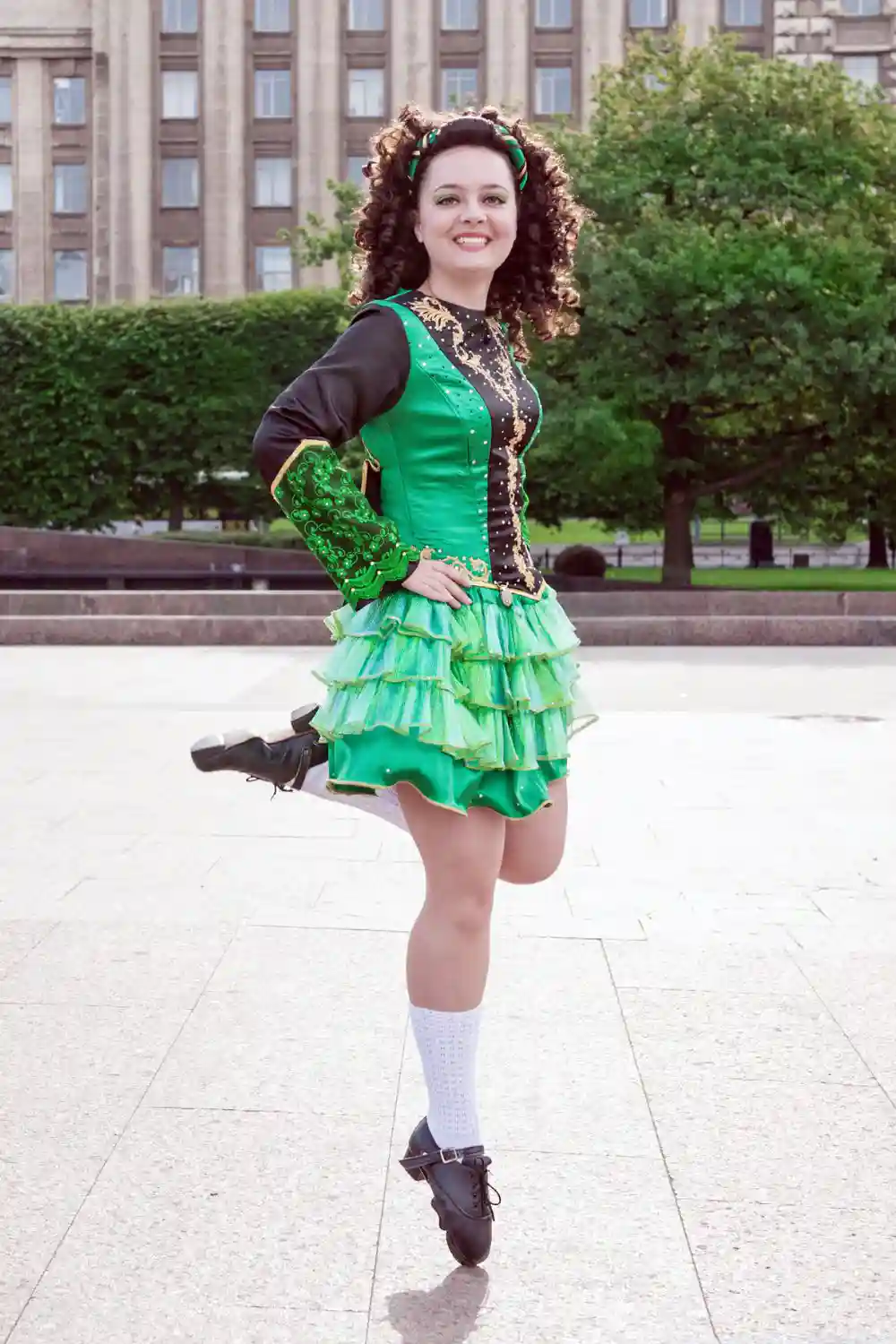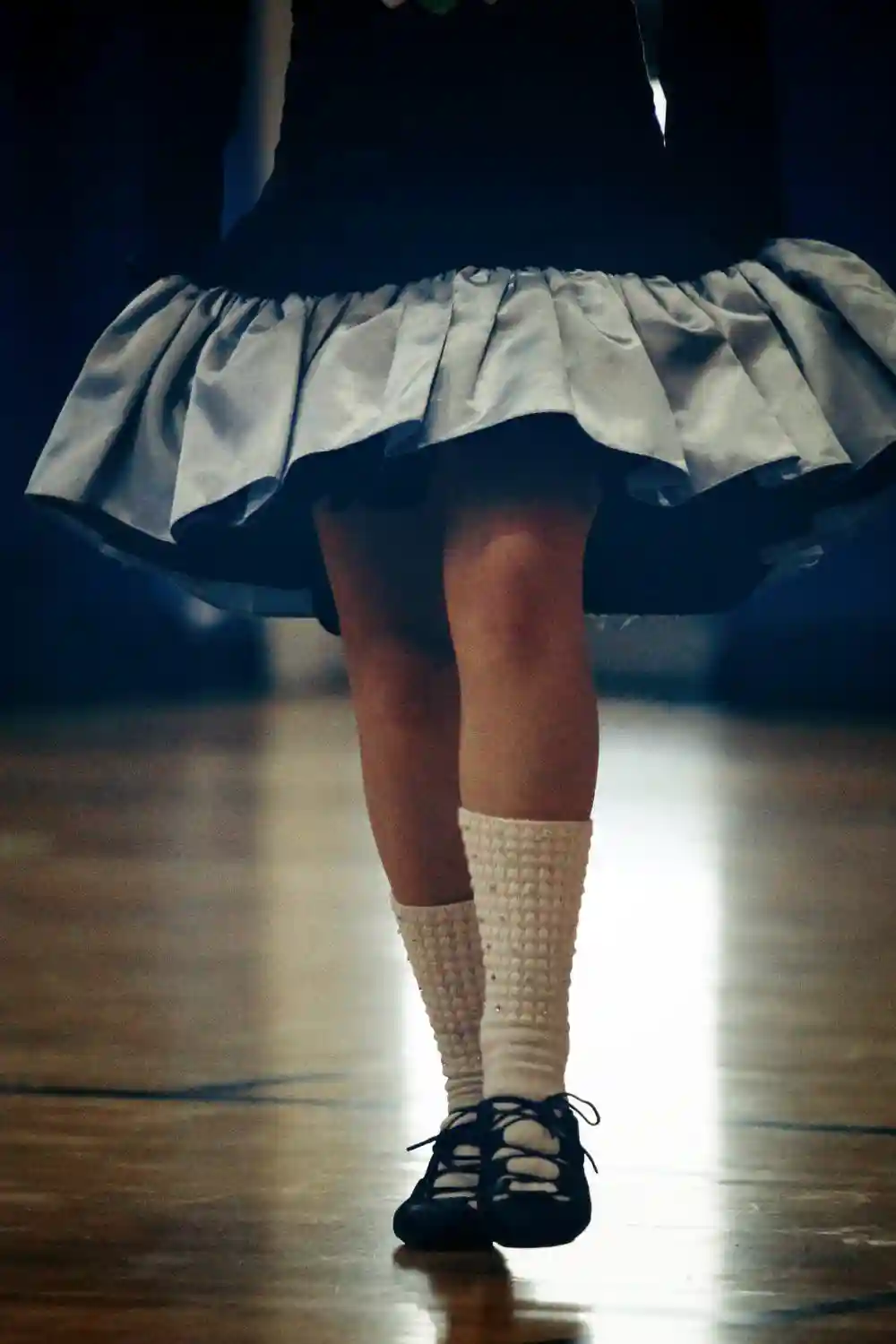For Irish dancers, wigs play an important role in their performances. Traditional dancers from years past wore elaborate curls done up in rags the night before a big event. As dancing grew worldwide, a more convenient choice emerged – wearing wigs to feises instead of spending hours on hair. Today, wigs offer Irish dancers benefits beyond just convenience.
Wigs help unify a dancer’s appearance with others on stage. The bouncing curls create an illusion of motion, making steps seem faster and jumps appear higher. Judges can focus on precise footwork when all competitors look synchronized from their corkscrew locks.
Wigs also protect real hair from sweat and heat. Dancers pour energy into feats without worrying uneven styles may distract them. Most significantly, wigs connect performances to cultural heritage. Tight ringlets and trinkets reflect pride in traditions passed through generations.
For these reasons, wigs remain a valued part of Irish dance attire. Let’s dive into more detail below.
Why do female Irish dancers wear wigs?
Convenience and time-saving during competitions
One major reason why female Irish dancers wear wigs is for convenience. In the past, dancers spent a long time getting their hair ready before performances. They would curl their hair using things like rags. This took hours and was hard work.
The introduction of wigs changed this. Dancers can now achieve a neat and consistent look much more easily. All they need to do is put on a wig. This saves them a lot of stress and time, especially on competition days. No more spending hours curling their hair the night before.
Wigs let dancers get their hair and appearance sorted quickly. Dancers don’t have to worry about how long it will take to style their hair. They can just focus on perfecting their dance. This is helpful because Irish dancing is hard work. Dancers want to save energy where they can.
Convenience is a big reason why wigs became popular. It makes things like getting ready much less of a chore. Dancers have more time and energy for practising their dance with wigs.

Appearance
Another important reason female Irish dancers wear wigs is for appearances. The wigs have curls or ringlets that give the hair bounce. When the dancers move, the curls bounce around. This makes their dancing look more exciting to watch.
The bouncy curls and ringlets create the illusion of motion. Audiences see the hair moving even more than the dancer’s actual footwork. It helps make the performance seem more lively and energetic.
Many dancers also choose wigs that stand out visually. Some have accessories like flowers or ribbons added. Others have colorful styles in shades of red, blonde, or brown. The decorated wigs help dancers individually shine on stage.
More recently, wig styles have gotten more creative. Some even have mini crowns woven into the curls. Decorations lend an air of glamour to competitions. They let dancers express their style while keeping with tradition.
The developing looks of Irish dance wigs let personalities shine through. At the same time, wigs maintain a uniform appearance that is expected. They play a big role in capturing people’s attention during lively dance routines.
Standardization
Another reason female Irish dancers wear wigs is for standardization. Irish dancing has become a worldwide sport with clear rules. Wearing wigs has become a common practice to follow these standards.
Competitions expect all dancers to look the same in loosely curled wigs. This helps create fairness. Judges can focus just on the dancing, not on different hairstyles. Wigs make appearances uniformly at every show.
By picking the usual wig, dancers know their look will be consistent everywhere. No matter the event, their hair will match what is expected. This shows they are serious performers who care about tradition. It fosters professionalism within the dancing community, too.
While some dislike wigs, most dancers see the benefits. Wigs help them stand out on equal footing with others. Audiences know what type of performance to anticipate as well. Standards in clothing and hair are now part of Irish dance’s fun spectacle.
Not every dancer has to adopt wigs. But those who choose to use them feel it supports participating in their sport’s shared culture. Uniformity works with high-energy routines to entertain crowds globally.
Uniformity
Another reason female Irish dancers wear wigs is for uniformity in group performances. When dancing in synchronized routines, it’s important for the group to look cohesive. Wigs help with this.
During shows with multiple dancers, wigs ensure similar hairstyles. Instead of different natural styles, all wear curly wigs. This creates a neat, matching appearance on stage. Judges can then focus on how precise the footwork is in sync.
The uniform look makes choreography easier to follow. Dancers staying in time is clearer when they all look uniform. No distractions from various hairs exist. Just their talent in coordination catches the audience’s eye.
Teams value how wigs add to their teamwork, too. A shared wig style fosters a feeling of togetherness. They understand the need to blend corresponding motions with appearance. Stronger bonds form from this standard.
For serious dancers, looking sharp as a team brings pride. Wigs play a role in displaying their discipline through polished shows. The consistency shows off not just skills but how they function as one.

Protection
Another reason dancers wear wigs is for protection. Irish dancing can make a person very hot and sweaty. This is no good for real hair.
Wigs keep dancers’ natural hair safe from the sweat and heat of fast dancing. Synthetic hair wigs are used and aren’t ruined like normal hair. Dancers don’t need to worry about their hair while moving hard.
The wigs also stop hair from getting messy or tangled up. Fancy footwork moves could easily pull at hair without a wig holding it in place. Wigs ensure hair stays neat so that dancers can focus fully on their dance.
Having protected hair allows dancers to pour energy into dance. They feel comfortable without distractions. Wigs keep hair out of the way, whether leaping high or spinning around.
Some other benefits are wigs shielding hair from damage by things like curling irons. Heavy styling isn’t needed underneath a wig. Overall, protecting natural hair lets dancers give maximum performance, always looking polished.
Traditional Look
Another reason dancers wear wigs is to keep with tradition. Wigs help the dancers look like people from past times in Ireland. Curls and braids in the wigs make dances seem more authentic.
Dancers who care about history want their performances to honor where Irish dance started. Wigs connect moves to the deep culture behind them. It also connects dancers to people who danced generations ago.
Some wigs get decorated with flowers or ribbons for added tradition. Not only do these styles mirror the past, but they make each dancer’s costumes unique. Audiences become immersed in the rich culture as they watch the dances.
Different organizations have their own wig rules. But most agree to keep tradition matters. Whether using wigs with synthetic or natural hair, tradition brings dignity. It reminds all that Irish dance sprang from earlier times and people.
Tradition enriches the experience for dancers, too. They feel pride knowing they represent those who danced before. Wigs unite dancers to history in a way free-flowing hair alone could not. This tradition empowers their talent through legacy.
Consistency
Another reason dancers wear wigs is for consistency in their appearance. Wigs make sure hair always looks perfect for performances, no matter what.
Things like the weather can mess with real hair on busy competition days. But wigs don’t change with rain, wind, or humidity. Dancers stay confident, knowing their hairstyle will stay neat. This consistency adds to the polished look they bring to every show.
Wigs also let hair get pre-done ahead of time. On stage days, all a dancer does is put their wig on. No stressing over last-minute styling. Just focus on giving their best dance.
Teams have a unified look when each member wears the same wig. Judges see dancers looking their sharpest together as a synchronized group from one show to the next.
Reliability matters when representing skill and tradition, too. Audiences know each performance will treat them to the best a dancer can offer – inside and out. Consistency through wigs ties the whole Irish dance experience seamlessly together.

Summary
In conclusion, wigs play an important role for many female Irish dancers. They provide benefits of convenience, protection, consistency, and more. Wigs allow dancers to achieve an expected look in their traditional art form easily. They also create practical advantages like keeping hair neat while performing energetic routines.
Whether honoring cultural roots or focusing judges on dancing skills, wigs elevate performances meaningfully. They connect individuals to teammates and history through shared styles.
Dancers feel pride in expressing talent and heritage, so audiences are immersed in rich traditions. While not mandatory, wigs empower many to perform at the highest quality levels.
Traditions adapt over time. Wigs became a valued part of Irish dance as it spread internationally. Today, they remain a popular choice owing to their diverse advantages.
Whether on solos or synchronized teams, wigs positively impact dancers and audiences. They deserve recognition as no simple accessory but rather an asset to both dancers and dance art.
FAQ
Do you have to wear a wig in Irish dance?
No, wearing a wig is not mandatory for Irish dancers. Some dancers prefer to wear their own hair instead of a wig. However, wigs have become very popular and common among dancers because they provide benefits like convenience, protection, and consistency in appearance and help achieve a traditional look.
Why do Irish dancers wear fake hair?
Irish dance wigs, often called “cape wigs”, are typically made of synthetic fiber rather than human or animal hair. This is because synthetic wigs hold their style better, are more durable, and resist heat and sweat from energetic dancing. They allow dancers to maintain a polished, consistent appearance without much effort compared to real hair.
What is the name of the Irish dance wig?
The traditional wig worn by Irish dancers is commonly known as a “cape wig”. This refers to its style – tight ringlets or curls resembling a decorative frilly fabric “cape”. Cape wigs are tightly wound synthetic hair woven onto a mesh or fabric base to create the characteristic thick ringlets look expected in Irish dance performances.
How do you condition an Irish dance wig?
To maintain an Irish dance wig, it’s important to dust it regularly to remove styling products or sweat. A recommended brand of conditioning spray can help keep the synthetic curls soft and prevent tangling. Avoid excess water, heat, or chemicals. Store wigs on a mannequin head or folded in tissue paper in their box between uses to preserve the shape of the curls.
What do female Irish dancers wear?
The standard attire for female Irish dancers includes a fitted costume called a skirt, bodice, and sleeves made of satiny fabric. Costumes are usually sleeveless, with flat or ballet-style shoes worn. Dancers dress the look with wigs, makeup, and fake tanner on the legs. Depending on the dance level and competition rules, accessories like a bracelet or fake eyelashes may be added.




